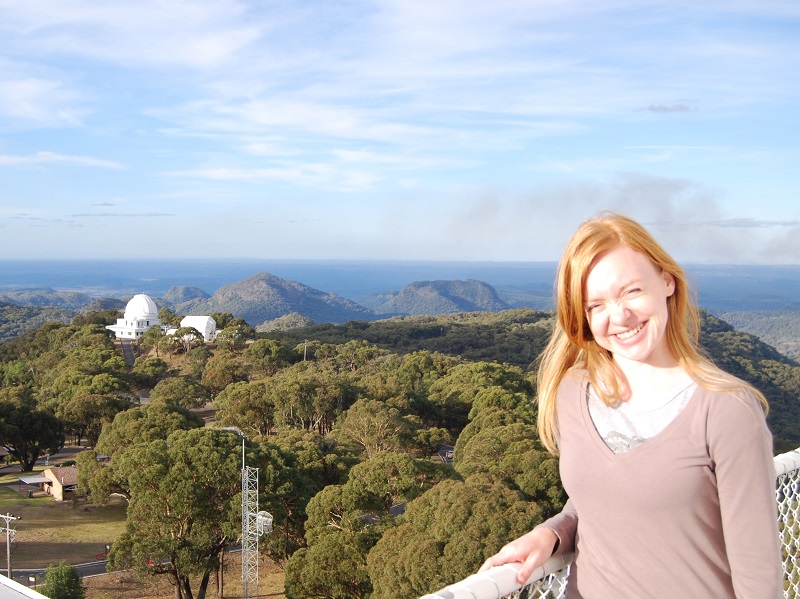What does an Astrophysicist do?
As an astrophysicist, you will study the physics, chemistry, origin and evolution of celestial bodies such as the Sun, other stars, galaxies, planets, and the cosmic microwave background. As astrophysics is a specialty of physics, people who graduate with astrophysics knowledge have a wide range of career options available to them. Within the professional research community, most positions for scientists require PhD degrees.
Study options:
- A Bachelor of Science, majoring in Physics
- Science Honours in Astrophysics; Masters or PhD in astrophysics.
What do you work in and what is your specialty?
I am a Postdoctoral Research Fellow at the Research School of Astronomy and Astrophysics, at Australian National University in Canberra.
My field of research is galaxies. We know that galaxies in the past were very compact, while galaxies today are quite large and puffy. We don’t yet know how they expand in size: whether by attracting many small galaxies to their outskirts, or by forming new stars throughout and puffing up uniformly.
I am taking images with a new camera on Gemini South in Chile, one of the world’s largest optical telescopes, to take snapshots of galaxies at different epochs in time. This will allow me to measure which mechanism is responsible for the galaxies’ dramatic increase in size.
My duties include writing proposals to secure telescope time, conducting the observations, processing and analysing the data, publishing papers, and attending and presenting at conferences.
How did you become interested in this area and when did you first start?
My PhD enabled me to develop into an independent researcher: largely due to being able to write my own observing proposals, plan and conduct observing, and generally take initiative; along with the advice and encouragement from my supervisor Michael Drinkwater, and colleagues in the UQ Astro Group.
I was afforded the opportunity to gain experience in all of my astrophysics duties for my PhD project, meaning that I had skills that were transferable to this job. Equally importantly, I had worked with other researchers in my field, so was known to most of my potential employers before commencing the job search.
What study path have you taken to get here?
I did all of my study at the University of Queensland. The study path I took was firstly, a dual degree, Bachelor of Business Management and a Bachelor of Science in Mathematics which I completed in 2002. After a break I returned to study to be awarded first class honours in Science in Astrophysics in 2010. I was awarded a Graduate Certificate in Research Communication in 2013 and a PhD in Astrophysics in 2014.
What do you like most about your job?
The most romantic part is the observing trips: the night sky is amazingly pretty and vast, and our observatories are located in some really interesting places. The most exciting part of the job is discovering new things about how galaxies work. These both put things into perspective: there is always something more to discover! The more we know, the more we know we don’t really know much at all.
Do you have any particular career highlights?
I had many observing trips while studying: to the ANU telescope and the Siding Spring Observatory in Australia; the Blanco telescope at Cerro Tololo Interamerican Observatory in Chile; and the Keck telescope on Mauna Kea in Hawaii.
While still a student, I was able to present my research at a workshop in Paris. A highlight was being part of the UQ Astro Group, a friendly and encouraging environment.
I was the UQ Science Faculty’s Three Minute Thesis winner in 2013, and was invited to give a talk at TEDxBrisbane in 2014, where I presented my PhD work: https://www.youtube.com/watch?v=r_VtPiOwHuo
What advice would you give to someone interested in working in this area?
Study a topic that you love. For research, find a supervisor with whom you can work well.

Name
Dr Sarah Sweet
Career
Astrophysicist
Current Role
Postdoctoral Research Fellow
Research School of Astronomy and Astrophysics
Australian National University
